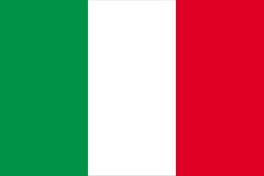This goes
to space
LARES 2
LARES 2 is a passive satellite of the Italian Space Agency.
It is the 4th flight of the LAGEOS program whose main mission, following that of LARES 1, LAGEOS-1 and 2, is to confirm the principle of general relativity and the Lense-Thirring effect- that rotating masses drag space-time around themselves.
Sphere of diameter: 36.4cm
Density 15.3g/cm3
Mass at launch: 387kg
Altitude: 5899km
Inclination: 70.16°
Also onboard are six European research CubeSats.
Courtesy of ILRS
Image Credit: ESA
On this
rocket
Vega-C
Meet Vega-C, a single body rocket about 35m high with a mass at liftoff of 210 tonnes. It is able to place about 2200kg in a reference 700km-polar orbit.
Vega-C is based on the existing Vega launch vehicle. It comprises four stages: three solid propellant stages, an upper fourth stage powered by a reignitable liquid-propellant engine, and a payload fairing.
The ogive-shaped fairing at the top of Vega-C is 3.3m in diameter and over 9m tall. Made of carbon fibre-polymer composite and cured in an industrial oven, this structure protects satellites from the thermal, acoustic, and aerodynamic stresses at liftoff and on the ascent to space.
The upper stage AVUM+, or Attitude Vernier Upper Module, ensures attitude control and precise orbital positioning and is designed for extended stays in space. The AVUM+ has a propellant mass of 0.74t and the main engine will provide an average thrust of 2.45 kN. The reignition capability of the AVUM+ allows Vega-C to reach a range of orbits to deliver multiple payloads on a single mission. Thrusters will typically burn one, two or more times to reach the required orbits. After separation of the payload(s), there will be a final boost to deorbit the upper stage, so that it burns up high in Earth's atmosphere over the ocean.
The third stage Zefiro-9, derived from Vega, burns 10t of solid propellant.
The second stage powered by the new Zefiro-40 motor contains about 36t of solid propellant, providing an average thrust of 1100 kN.
The first stage P120C motor is one of the largest monolithic carbon-fibre solid-propellant rocket motors ever built in one piece. Its development relies on new technologies derived from those of P80, the current first stage motor of Vega, to provide a significant increase in thrust at liftoff. The P120C will also be used as the side boosters on the Ariane 6 rocket, creating an opportunity for Europe to scale up production by using it on two launch vehicles in parallel.
Vega-C’s range of adapters makes this a very flexible launch vehicle capable of responding to market needs- including routine dedicated rideshares for small satellites, single/dual passenger passenger payloads, orbital transfer capabilities, and return missions.
Courtesy of ESA
From this
launch site
ELV - Guiana Space Center - Kourou, French Guiana
July 13, 2022
The Ensemble de Lancement Vega (ELV) pad at the Centre Spatial Guyanais (Guiana Space Centre) was previously used to launch the Europa, Ariane 1, Ariane 2, and Ariane 3 rockets under a different name.
It hosted its first launch on November 5th, 1971 when a Europa rocket launched the STV-4 payload. It was used for the final time for an Ariane 3 rocket in 1989, after which it went unused until 2012 when Vega began flying.
Located in French Guiana, the ELV pad is part of the French and European spaceport located near Kourou on the northern tip of South America.
Guiana Space Centre
The space center has been operational since 1968 and has hosted launches for the European Space Agency (ESA), the French National Centre for Space Studies, and commercial companies Arianespace and Azercosmos.
A total of 9 different rocket types have launched from the Guiana Space Centre, including three active rockets and six retired vehicles.
The current rockets of the Guiana Space Centre include the Ariane 5 for heavy payloads, the Russian-provided Soyuz 2 for medium-mass satellites, and Vega for smaller spacecraft.
The spaceport is also preparing for the Ariane 6, Vega C, and Vega E rockets currently under development that will launch from the space centre.
Photo: European Space Agency - S. Corvaja
GET THE SUPERCLUSTER APP
THE SUPERCLUSTER PODCAST
A podcast exploring the amazing milestones that changed space history, the wildest ideas that drive our future, and every development in this new Golden Age of Space.
SUPERCLUSTER ON PATREON
Your support makes the Astronaut Database and Launch Tracker possible, and keeps all Supercluster content free.
SUPPORTCOPYRIGHT 2021 SUPERCLUSTER LLC



